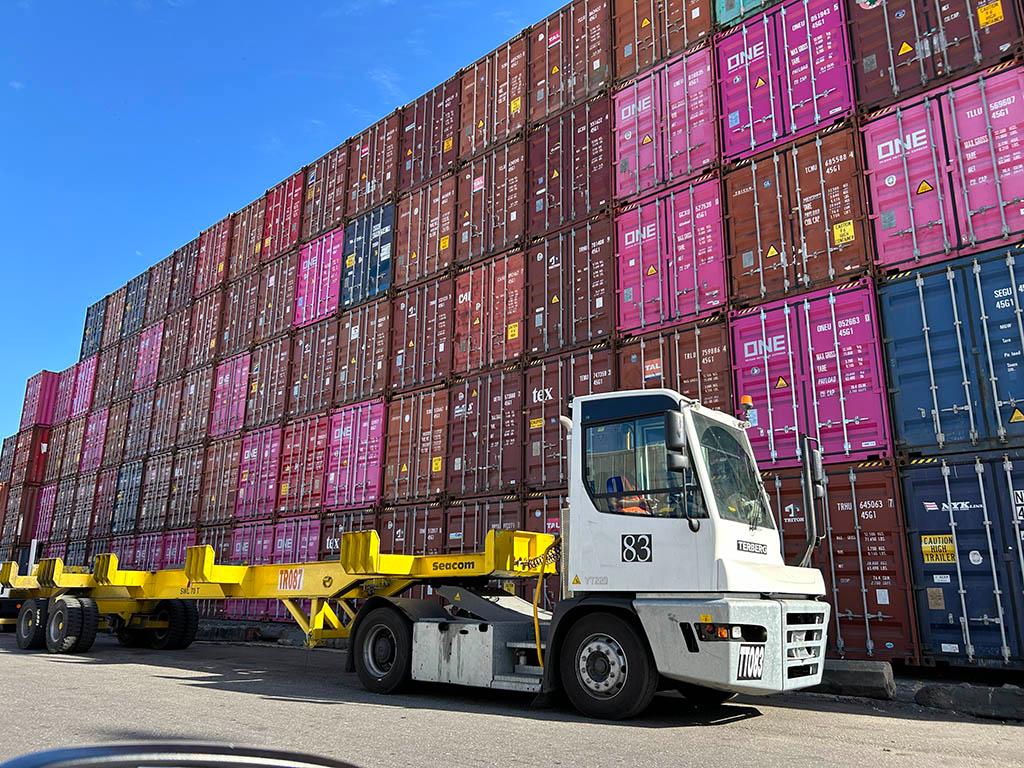TOMMOROW'S OPPORTUNITY TODAY
Building Wealth in Today's Economy
By Jarod Perryman - Managing Director | ScotiaLife Trinidad & Tobago Ltd. & Director – Wealth | Scotiabank

LINKAGE Q3 (2024) - OPPORTUNITY IN ADVERSITY
T
he global and local recovery from Covid-19 is nothing short or remarkable.
From being mandated to wear masks in public and lockdowns, which impacted our social lives and economy negatively, we are now able to return to normalcy. The resiliency of the human spirit has shone through and is one key factor responsible for the rebound in the global and local economic environment post-pandemic.
The T&T Economy
Locally, the Trinidad and Tobago economy’s response has been robust, rebounding from the pandemic to register growth of 1.5% and 1.4% in 2022 and 2023 respectively amid challenges experienced within the energy sector. Economic activity was driven primarily by the non-energy sector, namely the Wholesale and Retail, and Manufacturing sectors. This steady economic improvement is poised to continue, with the International Monetary Fund projecting real GDP growth in Trinidad and Tobago of 2.4% for 2024 and 2.3% in 2025.
We remain cautiously optimistic, as the local economy has suffered from lower energy prices and falling energy production. A turnaround within the energy sector is possible in 2026–2027 as new energy projects come onstream. However, as we continue to support a broader economic rebound, expenditure levels will need to be managed carefully as we navigate through the phase of the next couple of years with subdued gas production and uncertainty surrounding geopolitical tensions in various regions. Declining inflationary pressures, adequate international reserves, expansion in credit to the private sector and a sound buffer of the Heritage and Stabilisation Fund are some factors that keep our local economic outlook buoyed. In addition, we have seen positive moves regarding the execution of structural reforms of government-owned entities, promoting more efficient operations of state entities.
The Stock Market
Increased participation from retail investors and trading based on emotions has created downward pressure on local equity markets over the past two years. The Trinidad and Tobago Stock Exchange, gauged by the Trinidad and Tobago Composite Index (TTCOMP) declined in price by 18.9% over the period 2022 to 2023. Moreover, current trading prices of select local stocks on the TTCOMP may not reflect the performance of the respective underlying companies. Consequently, this juncture can be viewed as a point of financial opportunity as share prices of some companies traded on the exchange have moved away from intrinsic or fundamental values.
Additionally, within the local fixed income space during the first half of 2024, investors are now benefitting from higher rates across all maturities on the Trinidad and Tobago Dollar yield curve compared with years past. These increases have been more pronounced within shorter maturity instruments, but we view this as healthy for the investing public.
International Financial Landscape
Internationally, the financial landscape has also proven resilient since the pandemic against several events that threatened to derail the recovery. Global citizens have felt the brunt of persistent inflationary pressures not experienced in decades. Initially considered a ‘transitory’ phenomenon by central banks emerging from the pandemic, inflation has stayed at elevated levels for the better part of the last three years. This forced global central banks to embark upon aggressive monetary policy to curb consumer demand and eventually slow the pace of price increases.
This cocktail of events and policy moves led most economists to predict a global recession during 2023, and although there have been some mixed economic signals and structural scares, such has the short-lived mini-banking crisis in March 2023, this much predicted economic retreat is yet to materialise. Policies adopted by global central banks have impacted the asset allocation decisions of both retail and institutional investors globally.
Yield curve inversion, a phenomenon where interest rates on shorter maturity fixed income investments yield more that longer maturity investments, which is pronounced in the United States, has caused money market or short-term investments to be viewed as attractive to investors who benefit from high liquidity given lower perceived risks for higher comparative reward than in years past.
The rising interest rate environment over the past two years has also depressed prices on international bonds. This decline in bond prices presents opportunity to investors to avail of good yields on high quality bonds, compared with the past. The aggressive increase in interest rates was largely front-end loaded and by the second half of 2023, an increasing number of the world's central banks moved to the sidelines, adopting a wait-and-see attitude following the progress that had been made on lowering inflation rates. While the inflation battle has not yet ended, there was significant progress made towards lowering inflation to a more manageable level, therefore the prospect for lower policy rates in the future is becoming more of a reality which could prove to be a tailwind to bonds.
E
xtending further along the risk spectrum, international equity markets continues to perform well, altthough they continue to experience volatility which solidifies this asset class as a long-term portfolio feature for buy-and-hold investors. In the first month of the pandemic in February–March 2020, the S&P 500 Index, a widely accepted gauge for United States stocks, declined by 34%, then, almost as quickly, the market reversed and by August of that year, the S&P 500 was back to its old highs. Since then, the market has experienced pockets of volatility that made for some uneasy times for investors. Fast-forward to December 2023, the S&P 500 Index provided a total return of 57% over 2020 to 2023. This rally, which was pronounced during 2023, was led by the performance of a concentrated group of stocks known as ‘The Magnificent 7’, with notable price surges seen from the likes of Nvidia (+239%) and Meta/Facebook (+194%). This Magnificent 7 group of stocks comprises Nvidia, the poster child for the AI theme, Microsoft, Alphabet (Google), Amazon, Apple, and Tesla. Together, they accounted for almost two-thirds of the performance of the S&P 500 Index for 2023. Equity markets are inherently forward looking, therefore the prospects of AI and the companies that benefit have driven equity markets.
Global GDP growth expectations for 2024 stand at 3.0%, which is up from the 2.6% level predicted late last year. Further modest upward revisions seem likely if the leading business cycle data continues to improve in a similar manner to what has transpired over the past 9 months. Investors inevitably experience emotional cycles as circumstances change, however, the key to achieving long-term financial goals is to keep our eyes on the prize, investing for the long run and staying the course, remembering the ‘Big Picture.’
History has demonstrated that, despite various major events globally such as wars, health and financial crises, financial markets trend upward over time and the volatility of a diversified portfolio is lower than individual long-term investments. For instance, US$1,000 invested in 1976 would have grown to $199,465 investing in US equities, $83,864 in global stocks and $49,379 in a balanced portfolio.
Throughout all episodes, the key principles of investing remain true, relevant and have withstood the test of time; invest early, invest regularly, stay invested and diversify.
ABOUT THE AUTHOR

Jarod Perryman is the Managing Director at ScotiaLife Trinidad & Tobago Ltd. & the Director – Wealth at Scotiabank.
